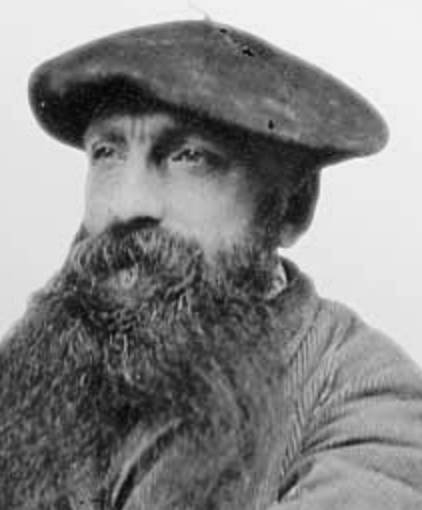On this date in 1840, sculptor François Auguste René Rodin was born in Paris to working-class parents. From ages 14 to 17 he attended the Petite École, a school specializing in art and mathematics. After being rejected three times by the École des Beaux Arts, he carved decorative stonework for income. In 1862, grief-stricken by the peritonitis death of his sister Marie, he entered the Catholic Congregation of the Blessed Sacrament but soon realized religion was not for him.
As a struggling artist, he met Rose Beuret, a seamstress who became his life companion and model. In 1875 Rodin traveled to Italy and was influenced by Michelangelo, to whom he was compared as his fame grew. Rodin created “The Age of Bronze,” which was exhibited in the Paris Salon in 1877. It was so realistic that critics accused him of casting the sculpture from a live model. The sculpture and the controversy around it catapulted him to fame. In 1883 at age 43, he started a passionate but stormy relationship with 18-year-old Camille Claudel. They influenced each other artistically, while Rodin maintained his ties with Beuret, with whom he had a son.
His most famous sculptures include “The Thinker,” “The Kiss” and his statue of Honoré de Balzac. The Biron Hotel in Paris, which he had saved and worked in, has become the lovely Musée Rodin, where his sculpture is on display as he left it.
Rodin married Beuret in January 1917, 53 years into their relationship. She died two weeks later. Rodin died nine months later at age 77. He had a secular funeral.

